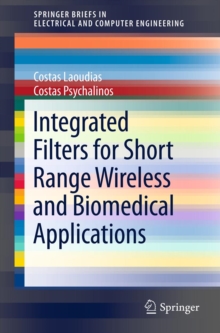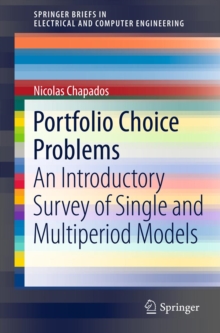
Frequency Selective Surfaces based High Performance Microstrip Antenna Paperback / softback
by Shiv Narayan, B. Sangeetha, Rakesh Mohan Jha
Part of the SpringerBriefs in Electrical and Computer Engineering series
Paperback / softback
Description
This book focuses on performance enhancement of printed antennas using frequency selective surfaces (FSS) technology.
The growing demand of stealth technology in strategic areas requires high-performance low-RCS (radar cross section) antennas.
Such requirements may be accomplished by incorporating FSS into the antenna structure either in its ground plane or as the superstrate, due to the filter characteristics of FSS structure.
In view of this, a novel approach based on FSS technology is presented in this book to enhance the performance of printed antennas including out-of-band structural RCS reduction.
In this endeavor, the EM design of microstrip patch antennas (MPA) loaded with FSS-based (i) high impedance surface (HIS) ground plane, and (ii) the superstrates are discussed in detail.
The EM analysis of proposed FSS-based antenna structures have been carried out using transmission line analogy, in combination with the reciprocity theorem.
Further, various types of novel FSS structures are considered in designing the HIS ground plane and superstrate for enhancing the MPA bandwidth and directivity.
The EM design and performance analyses of FSS-based antennas are explained here with the appropriate expressions and illustrations.
Information
-
Available to Order - This title is available to order, with delivery expected within 2 weeks
- Format:Paperback / softback
- Pages:45 pages, 22 Illustrations, color; 9 Illustrations, black and white; XXIII, 45 p. 31 illus., 22 illu
- Publisher:Springer Verlag, Singapore
- Publication Date:09/10/2015
- Category:
- ISBN:9789812877741
Other Formats
- PDF from £38.24
Information
-
Available to Order - This title is available to order, with delivery expected within 2 weeks
- Format:Paperback / softback
- Pages:45 pages, 22 Illustrations, color; 9 Illustrations, black and white; XXIII, 45 p. 31 illus., 22 illu
- Publisher:Springer Verlag, Singapore
- Publication Date:09/10/2015
- Category:
- ISBN:9789812877741










